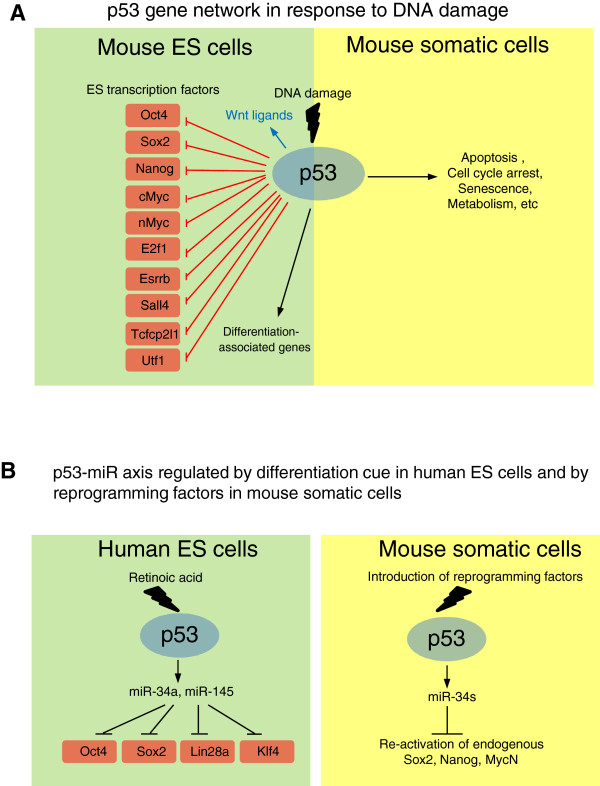Figure 2.
Molecular mechanisms underlying the roles of p53 in ES cells and iPS cells. A, In response to DNA damage, p53 can directly repress the transcription of several master regulators of mES cells. p53 also induces the transcription of several Wnt ligand genes, whose protein products are secreted from the stressed mES cells to act on neighboring cells in a paracrine manner. Interestingly, p53 up-regulates differentiation-associated genes in ES cells, suggesting that p53 signaling connects to the developmental circuitry in ES cells upon DNA damage. The cellular outcomes of p53 signaling in somatic cells are shown as a comparison. The p53-dependent cell cycle arrest and senescence are absent or have not been reported in mES cells. B, In human ES cells, p53-miR axis is induced by a differentiation signal, retinoic acid (RA). p53 activates miR-34a and miR-145, which in turn repress Oct4, Sox2, Lin28a, and Klf4. p53 also induces the expression of miR-34a, b, and c in mouse somatic cells upon the introduction of reprogramming factors. These miRs repress Sox2, Nanog, and nMyc, the reprogramming factors.

